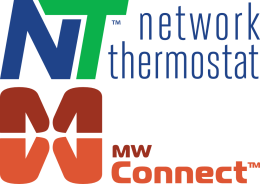
There are many rumors about where Wi-Fi is headed, what is going to happen with older Wi-Fi devices, and the impact on networks when the newer Wi-Fi versions are deployed. This short paper is to help clear things up as of April 2024. The need for faster and faster wireless communications will continue for years to come.
Can Older Devices Slow Down Newer Networks?
Yes… and usually not very much in the grand scheme of networks.
Modern networks obviously include both Wi-Fi and Ethernet. It is often rumored that legacy Wi-Fi devices slow down traffic for the entire network. Fortunately, that’s just a broad misconception. The Wi-Fi part of a network has very little to do with the Ethernet part of the network. Think of Wi-Fi as the feeder road on a highway and Ethernet as the main lanes. You can make a visual comparison of the inside and outside lanes on a highway and correlate the inside lane as the fastest version of Ethernet. Once data packets are translated from the Wi-Fi access points, the Ethernet part of the network takes over and network speeds are managed by the much faster Ethernet (802.3) hardware.
‘Wi-Fi’ is a set of technical standards by the IEEE, with the general standard number 802.11 that was first adopted in the late 1990’s. 802.11 has many versions, and the first early adoption was versions 802.11a (5 GHz) and 802.11b (2.4 GHz). Due to limitations in the DSSS modulation technique that is used for 802.11b (which kept data rates at a theoretical maximum of 11Mbps), several other versions were standardized as 802.11g (2.4 GHz) and 802.11n (both 2.4 GHz and 5 GHz are available).
Beginning with 802.11g, OFDM modulation is used, which allows for much higher speeds to be obtained and work together across all versions of OFDM. But due to the modulation differences between DSSS and OFDM, when older ‘b’ radios (DSSS modulation) are placed on a Wi-Fi network that also uses ’g’, ‘n’ or newer radios (all are OFDM or newer variations and improvements thereof), the ‘b’ radios can limit the overall wireless throughput of the specific Wi-Fi access point with a connected ‘b’ radio since the access point will be forced to use the older modulation type. For this reason, ‘b’ radios fell out of favor over a decade ago and most network administrators turn off the available-to-connect ‘b’ devices.
It’s possible on newer networks with Wi-Fi 6 capability to see minor degradation on the Wi-FI part of the network when ‘g’ and ‘n’ radios are transmitting (not just connected). However, modern Wi-Fi routers and access points often include digital signal processing (DSP) and other features to mitigate the impact of these older devices on overall network performance.
For example, most commercial routers support band steering, which encourages newer devices to connect to the faster 5 GHz band while directing older devices to the 2.4 GHz band. Additionally, Quality of Service (QoS) features can prioritize traffic from newer devices, ensuring critical applications receive adequate bandwidth.
Therefore, the colloquially accepted belief that every time a ‘newer’ Wi-Fi standard comes out the ‘older’ standard will slow down the network is not accurate for modern networks, and little conversation is had about what the ‘network’ really means.
In reality, there are only minimal real-world differences in overall throughput on networks that have mixed radio standards (g, n, ac, ax, etc.), compared to those that only have devices with radios using the latest Wi-Fi standards. They all use variations of the OFDM modulation and MIMO technologies implemented in Wi-Fi 4, and modern router logic handles most of the potential slowdowns. Thus, having a mixed radio standard minimally and unnoticeably affects performance, but does allow a diverse device ecosystem to coexist.
MIMO - Multiple Connections
Multiple Ins Multiple Outs. Believe it or not, early Wi-Fi standards only allowed a single radio to communicate with an access point. It is referred to as Single Input Single Output (SISO). Until a packet of information was verified as complete, no other radio (device) could communicate with the access point. That changed with Multiple Input Multiple Output (MIMO) for the Wi-Fi 4 and Wi-FI 5 specifications, allowing simultaneous communication with up to four devices, and now up to eight with Wi-Fi 6. This substantially increases the speed of these networks due to the ‘horsepower’ of the access points without attributable degradations from Wi-Fi 4 (802.11n) devices.
Side Note: Range
It is important to note that due to the laws of physics, the lower the frequency, the longer the range, and the higher the frequency, the greater the capability to carry information. Therefore, at the same power level (regulated by the FCC), 2.4 GHz radios transmit further than 5 GHz radios, but 5 GHz radios can pack more information given that the assigned frequency spectrum has more available bandwidth, and hence allow for higher throughput, albeit this depends on congestion, interference, and physical layout. (Think of this like AM and FM radio. AM goes a lot further but the sound quality is lacking compared to FM)
Generation Wi-Fi Clarifications and What's Next
In an attempt to reduce confusion about many of the 802.11 suffixes, the Wi-Fi Alliance renamed many of the Wi-Fi generations as follows:
| Generation | IEEE Standard | Adopted | Modulation Type | Security Type | Maximum Link Rate (Mbit/s) | Radio Frequency (GHz) |
| Wi-Fi 8 | 802.11bn | 2028 estimated | MU-MIMO- OFDM | ?? | 100,000 | 2.4, 5, 6, 7, 42.5, 71 |
| Wi-Fi 7 | 802.11be | 2024 | MU-MIMO- OFDM | WPA, WPA2, WPA3 | 2.4, 5, 6 | |
| Wi-Fi 6E | 802.11ax | 2020 | MU-MIMO- OFDMA | WPA, WPA2, WPA3 | 574–9608 | 6 |
| Wi-Fi 6 | 2019 | MU-MIMO- | WPA, WPA2, WPA3 | 574–9608 | 2.4, 5 | |
| Wi-Fi 5 | 802.11ac | 2014 | MU-MIMO- OFDM | WPA, WPA2, WPA3 | 433-6933 | 5 |
| Wi-Fi 4 | 802.11n | 2008 | MIMO- OFDM | WPA, WPA2, WPA3 | 72-600 | 2.4, 5 |
| (Wi-Fi 3)* | 802.11g | 2003 | OFDM |
| 6-54 | 2.4 |
| (Wi-Fi 2)* | 802.11a | 1999 | OFDM |
| 6-54 | 5 |
| (Wi-Fi 1)* | 802.11b | 1999 | DSSS |
| 1-11 | 2.4 |
| (Wi-Fi 0)* | 802.11 | 1997 | DSSS |
| 1-2 | 2.4 |
*Wi-Fi 0, 1, 2, and 3 are named by retroactive inference. They do not exist in the official nomenclature. |
|
|
|
|
|
|
Additional Frequency Bands
As shown in the chart, Wi-Fi 6E and the latest Wi-Fi 7 both add a 6 GHz band that the FCC has opened up, and in the coming years, even more frequencies will potentially be added, all the way up to 71 GHz. Remember, as the frequency goes up, the channel bandwidth increases allowing more information to be transmitted, but the distance goes down.
2.4 GHz is Going Away (My IT Department told me everything is changing to 5 GHz)
Another common myth is that the older 2.4 GHz networks are going away and network hardware won’t support it. This is simply not true, as can be seen in the table above. This rumor gained traction as 802.11ac gained short-term popularity with its 5 GHz-only frequency. All newer routers and access points, while having 5 GHz radios to support 802.11ac, never stopped supporting 2.4 GHz devices.
The opposite is actually true. 802.11ac was leapfrogged by 802.11ax (WI-FI 6 and WI-FI 6E) to include 2.4 GHz. It is a requirement in the 802.11ax specification to fully support 802.11g and 802.11n, as well as other legacy versions, and the same is true for Wi-Fi 7. Wifi 6 and newer versions made several improvements to the 2.4 GHz side of things including power-saving features specifically intended for IoT devices that run on battery and benefit from the improved range.
If you hear from an IT department that they intend to mothball 2.4 GHz Wi-Fi and move exclusively to 5 GHz and higher frequencies on their network for fear of legacy devices (2.4 GHz) slowing down new hardware, you can remind them there is no technical reason for concern about measurable network speed reduction, other than devices operating on 802.11b, which should be dealt with anyway because 802.11b is not OFDM capable.
Why Do So Many IoT Devices Only Have 2.4 GHz Radios?
IoT devices such as sensors, thermostats, lights, irrigation equipment, vending machines, and other devices benefit from residing on the 2.4 GHz band because in most cases they are in fixed locations, and since 2.4 GHz has a 40% longer range than 5 GHz, they can reach access points further away. Additionally, IoT devices use minuscule amounts of data compared to devices like smartphones and laptops and therefore don’t benefit from the faster speeds of 5 or 6 GHz anyway.
A Better and Simpler Way to Manage 2.4 GHz Devices on Newer Networks with 5 GHz and 6 GHz
Some heavy network environments (such as schools) have IT departments continually scrambling. There is always a need for more devices, faster networks, and easier access without degrading security. The ‘streaming’ world has driven and will continue to be the driving force for speed, and the main reason for the continual upgrade of the Wi-Fi standards.
In environments where there are large needs for speed as well as for IoT devices, some simple best practices to manage networks can work out for everyone’s benefit.
- SSID separation for 2.4 GHz - Use different network names for the 2.4 GHz so there is never any confusion about which SSID to use. One example is using a smartphone to register a 2.4 GHz IoT device on a network. If the SSID names are the same for 2.4 GHz and 5 GHz, then it’s likely a smartphone could see the 5 GHz network and try to pass the credentials to the IoT device that can’t use them because it's 2.4 GHz capable only.
- Back-of-house SSID separation and hidden SSIDs. It’s quite common in modern networks for the ability to add many SSIDs and VLANs, thus easily separating different types of network devices and uses on the same network. For security purposes and to reduce confusion for the casual user who sees multiple SSIDs to select from, best practices for back-of-house devices (devices the public doesn’t need to know about) include hiding the SSIDs in addition to separation and VLANs.
Summary
Attention must be directed towards all components of the network, acknowledging that certain outdated Wi-Fi standard devices may pose challenges in newer networks. However, with the integration of OFDM, MIMO, and band steering technologies, the majority of modern networks overseen by proficient IT configuration teams can effectively accommodate a diverse array of Wi-Fi device types without significant disruption. The IEEE is a group of highly skilled engineering professionals across various domains–digital, analog, RF, firmware, and hardware–collaborating to enhance wireless communication with each standards upgrade, all while preserving the functionality of existing networks. They navigate the Wi-Fi landscape alongside users, striving to avoid rendering perfectly functional devices obsolete simply due to the development of faster data transmission methods.
- 2.4 GHz is NOT going away
- New 2.4 GHz devices and even most older ones do NOT degrade modern network performance
- There are simple ways to make mixed networks easier to manage like SSID separation and VLANs
Thanks for reading and sharing!
Networking with Thermostats Assistance
LINKS:
IEEE 802.11 on Wikipedia
https://en.wikipedia.org/wiki/IEEE_802.11#:~:text=802.11a%20uses%20the%205,%3A%20list%20of%20WLAN%20channels)
Demystifying Wi-Fi
https://www.copperpodip.com/post/demystifying-wi-fi-a-comprehensive-comparison-of-wi-fi-5-6-and-7
IEEE 802.11 Protocol Stack
https://www.researchgate.net/figure/IEEE-80211-protocol-stack_fig5_220619392
What is Wi-Fi 7?
https://www.tp-link.com/us/wifi7/
Wi-Fi 7 Explained
What is Wi-Fi 6?
https://www.itpro.com/network-internet/wifi-hotspots/367703/what-is-wi-fi-6
Wi-Fi Explained: Wi-Fi 4, Wi-Fi 5, Wi-Fi 6, Wi-Fi 7
https://www.review-hub.co.uk/wifi-explained/
Wi-Fi 6 vs WiFi 7
https://www.tomsguide.com/face-off/wi-fi-6e-vs-wi-fi-7-whats-the-difference



